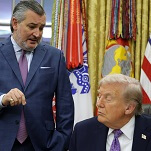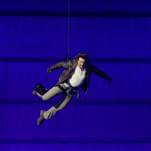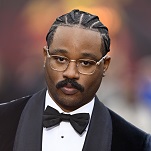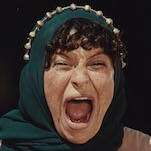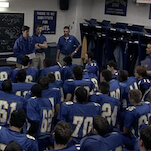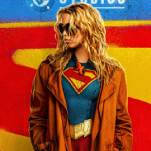With Saturday Night Live celebrating its 50th anniversary this year, there has been a flood of stories about the sketch series. These anecdotes have come mostly from former cast members, writers, and hosts. SNL’s enigmatic creator and producer, Lorne Michaels, has been characteristically silent; Michaels has never been a huge fan of the press despite his status as a comedy-industry kingmaker. But New Yorker editor Susan Morrison has finally given the public an intimate look at Michaels with her new biography, Lorne. In addition to shadowing Michaels for a full week as he and his employees put together an episode of Saturday Night Live in 2018, Morrison had unprecedented access to Lorne’s family and friends, allowing her to paint, for the first time, a full portrait of Michaels’ life. Lorne is interspersed with tidbits about SNL’s legendary cast and writers (like Bob Odenkirk’s accusation that Michaels “mindfucked” Chris Farley), but her access to Michaels allows for better insight into the man himself than any other book or documentary about the show that came before. Here are some of the best selections from Lorne.
1. Michaels curated his image by holding a glass of wine
In her book, Morrison captures Michaels’ uncanny ability to manipulate others. In the early days of the show, this talent was especially helpful in placating nervous money men and keeping the C-suite executives off his back. But he also knew how to work the room with the cast and crew of his own show. Morrison writes, “[NBC executive Dick] Ebersol would excel at cutting through red tape, and figuring out how to get NBC to build more dressing rooms, or to pay for the cases of white wine that made it possible for Michaels to walk around the studio floor holding a glass, one of his methods of projecting nonchalance. (The wine cost ended up hidden in the props budget.)” The wine trick was partially about projecting sophistication as well—Michaels was giving “quiet luxury” decades before the term was invented—but it could both placate and unnerve. One staffer might look at him and think, “If he’s not worried, I don’t need to be worried, either,” but another might view it as an unsettling indifference to whether the show succeeded or failed.
2. Chevy Chase was always an asshole
Michaels has a hands-off approach to dealing with conflict between employees. Even early in the first season of the show, Chevy Chase was getting on everyone’s nerves. He was a breakout star from the start, and he took every opportunity to remind the cast of it. “It annoyed the cast and writers when Chase compared the show to ‘playing at the top of the minors,’” Morrison writes. In response, “Michaels put the irritation on the air: in a subsequent cold open, Garrett Morris sticks a pin into a Chevy voodoo doll.” The tension between Chase and the rest of the cast continued to mount.
3. John Belushi used to steal the host’s limo
John Belushi had a particularly tough time dealing with Chase’s sudden fame and began acting out in response. “Belushi devised ways of dodging Chase’s shadow,” Morrison writes. “…The network rented one limousine to ferry the host around each week. ‘John would walk the host out of the party, and get in the car with the person,’ Michaels said. ‘Then he’d drop the host at the hotel and stay in the limo. He’d lean out the window with one hand on the roof and get driven around the city in hopes of being recognized.’” At this, Michaels finally stepped in. “John, you can’t return the limousine at six in the morning,” Michaels told him.
4. Michaels tried to undermine one of Dana Carvey’s best Church Lady sketches
Throughout her book, Morrison documents countless employees who were, at times, in awe of and exasperated with Michaels’ exacting nature. The show floundered during his five-year absence between 1980 and 1985, and even when he came back, he took a more hands-off approach that didn’t work. It was clear that SNL just didn’t work without him; Michaels had some sort of magic touch that made the show work. But sometimes, writers and cast members pushed back on him and it actually worked. In one instance, Michaels tried to bury one of Dana Carvey’s Church Lady sketches. “Carvey and Michaels disagreed only once about the character; Michaels thought that Church Lady getting frisky with the pro football players Joe Montana and Walter Payton was too dirty. (‘I try to penetrate any opening I can find,’ Payton, the running back, explains, as Church Lady wriggles.),” Morrison writes. “Annoyed, Michaels moved the sketch to late in the show. Carvey surprised himself by pushing back. ‘I can’t believe I did this,’ he recalled, ‘but I snapped at Lorne and said, ‘I’m just trying to make the show a hit again.’ The result was that Carvey gave the piece everything he had, and despite its Siberian time slot, it destroyed. ‘This old sound guy came up afterward and said, ‘I never seen the needles peak like that, kid,’ Carvey said.”
5. Jeff Daniels almost had a plaster mask permanently affixed to his face
At SNL, the hair and makeup team often make plaster face-casts of the hosts and performers to help with wigs and prosthetics. It’s a routine process but one time it went notably wrong. “When Jeff Daniels hosted, in 1995, a chemical mishap resulted in hardened plaster ripping hunks of flesh from his face; it took a hammer and an X-Acto knife to get the mask off,” Morrison writes.
6. NBC nearly replaced Michaels with Judd Apatow in the ’90s
People have been saying SNL isn’t funny anymore since at least the show’s fifth season in 1979, according to a TV Guide story that Morrison dug up. The creative direction of the show has remained a point of contention between Michaels and NBC execs throughout most of its run. In the ’90s, tensions reached another boiling point after a season of particularly bad reviews and a disastrous New York cover story. Don Ohlmeyer, then the president of NBC’s West Coast division, wanted Michaels gone. So, he and Warren Littlefield, president of NBC’s entertainment division, approached an upstart comedy writer and producer then working as the head writer of The Ben Stiller Show: Judd Apatow. Apatow was only 27 years old at the time. “Warren Littlefield had reached out to him to discuss the idea of him working at SNL in a producer capacity, intimating that he could be in line to take over the show,” Morrison writes. “‘I investigated it for a moment,’ Apatow said. ‘They gave me the budget to look at, and I called a few people and asked what they were spending money on.’ He even met with Michaels a couple of times. But there was a vagueness to the discussions. Littlefield never explicitly addressed the job responsibilities— or NBC’s SNL succession plans.” Suspicious of the underhanded behavior, Apatow told Littlefield he wasn’t interested.
Apatow explained his decision as pragmatic to Morrison. “‘I realized that I probably wouldn’t have any power to make decisions at the show,’ Apatow said. There were issues of respect and karma, too. ‘One of the biggest reasons I went into comedy was watching SNL,’ he said. ‘I thought, this is Lorne’s show, and I don’t want to be a part of anything that disrespects his captaining of his ship. At some point, I realized that Lorne is a master strategist. Whatever’s happening, Lorne is going to win. It was clear that he wasn’t going to step back, and that he was playing some game of judo with the network.’”
Michaels weathered the attempted takeover and maintained his position at SNL, but not without a heavy cost: nearly all the cast and writing staff were fired. But he rebuilt the show, as he has several times throughout his career, and continued on. Now, as the show celebrates its 50th anniversary and with Michaels set to celebrate his 81st birthday this year, rumors are flying about who could take over the show. Apatow has consistently been at the center of that speculation in the press. But Michaels’ incredible tenacity, as Morrison documents in Lorne, shouldn’t be underestimated. Even after such an eventful career, he shows no signs of slowing down.


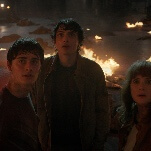




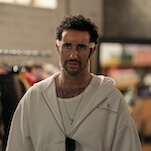


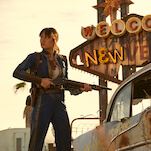










![HBO teases new Euphoria, Larry David, and much more in 2026 sizzle reel [Updated]](https://img.pastemagazine.com/wp-content/avuploads/2025/12/12100344/MixCollage-12-Dec-2025-09-56-AM-9137.jpg)



